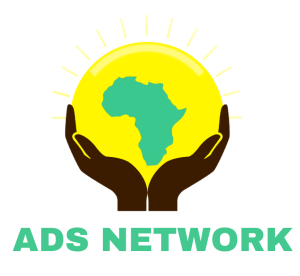In Africa, 6.4% of children under 14 have moderate or severe disabilities; and less than 10% are attending school.

Child crawling without aid as a depiction of children without access to education in grassroots’ African communities. Photo credit – MLee (@CitizenY2) on Twitter.
Today, an estimated 65 million primary and secondary school-age children have disabilities – close to half of them are out of school.
Exclusion of children with disabilities from education has an adverse economic impact at the family, community, and country level. The schooling deficit experienced by children with disabilities can become the most challenging impediment to earning an income and long-run financial health as adults. Within the time period of 2022 and 2023, African Disability Support Network have placed focused objectives onto financially supporting children with mental and physical disabilities to get special education; onward, facilitating the construction of educational centers in African grassroots’ communities to foster inclusive learning. This project will run and extend through Sierra Leone, Cote de’voir, Nigeria, Republic of Benin, Togo and Ghana.
The expected outcomes include:
- Increased use of evidence-based programmatic and policy recommendations as well as tools to design and implement inclusive education interventions by African governments and development practitioners
- Increased access and enrollment of girls and boys with disabilities in targeted African countries. Specifically, the program promotes strategic use of resources for disability inclusion and provides flexible support for emerging needs and priorities in project preparation.
STRATEGY
Children with disabilities worldwide face cultural, economic and social barriers from within and outside the education system that directly or indirectly impact their ability to get a high-quality education, such as:

Children learning via informal method of education and learning in Africa. Photo Credit – RosieB (@rosiechairlieB) on Twitter.
- Supply-side barriers: Physical accessibility of school buildings, classrooms and toilets as well as their neighborhoods; transportation means to get to school; inaccessible learning materials, inflexible curricula, teaching methods and examinations; teacher and educator knowledge on inclusive teaching practices; discrimination on the basis of disability.
- Demand-side barriers: Stigma and attitudinal barriers; internalized parental and family misconceptions about children’s ability to learn; family resources and caregiving dynamics; financial supports; welfare provisions and eligibility criteria.
Recent Comments
Categories
Popular Tags
Addressing the myriad of individual, community, and system-level barriers to disability-inclusive education requires a comprehensive ecosystem approach towards the design and implementation of targets the inclusive education.

Child teaching and setting an example on blackboard in African setting. Obtained from: UN Global Impact; Communication on progress.
The Disability-inclusive Education in Africa provides advisory and analytical support across three pillars:
- Pillar 1: Increasing the evidence base on educational participation of children with disabilities – to strengthen the evidence base on the economic, social, and system-level structures that impact inclusion for children with disabilities, and the return-on-investment on different types of policy and programmatic interventions to support inclusive education in Africa.
- Pillar 2: Supporting demonstrative activities – to expand the evidence base on “what works” to promote the social inclusion of children with disabilities by supporting small grants to World Bank teams working across Africa. Successful grantees will help promote the design and implementation of policies and operations by governments to work toward the educational participation of children with disabilities in the region.
- Pillar 3: Disseminating knowledge curated from funded analytical work through policy and knowledge briefs, recommendations for programmatic and policy change, fact sheets, blogs, webinars, educational videos, and social media platforms.




